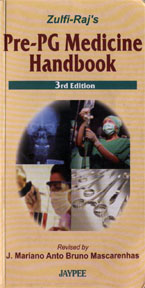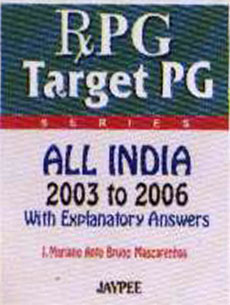065. A 6-month-old infant had itchy erythematous papules and exudative lesions on the scalp, face, groins and axillae for one month. She also had vesicular lesions on the palms. The most likely diagnosis is:
1. Congenital syphilis
2. Seborrhoeic dermatitis
3. Scabies
4. Psoriasis
Answer
3. Scabies
Reference
Nelson 15th Edition Chapter 618
Quality
Reader
Status
Repeat
Discussion
Scabies is caused by burrowing and release of toxic or antigenic substances by the female mite Sarcoptes scabiei var. hominis. The most important factor that determines spread of scabies is the extent and duration of physical contact with an affected individual; the children and sexual partner of an affected individual are most at risk. Scabies is transmitted only rarely by fomites because the isolated mite dies within 2{endash}–3 days.
Explanation
1. The manifestations of late congenital syphilis result primarily from chronic inflammation of bone, teeth, and the CNS. Skeletal changes due to persistent or recurrent periostitis and associated thickening of bone include frontal bossing, a bony prominence of the forehead “olympian brow”; unilateral or bilateral thickening of the sternoclavicular portion of the clavicle (Higoumenakis sign); an anterior bowing of the midportion of the tibia (saber shins); and scaphoid scapula, a convexity along its medial border. Dental abnormalities are common and include (1) Hutchinson teeth, which are the peg- or barrel-shaped upper central incisors that erupt during the 6th yr of life; (2) abnormal enamel, which results in a notch along the biting surface; and (3) mulberry molars, abnormal 1st lower (6 yr) molars, characterized by a small biting surface and an excessive number of cusps. Defects in enamel formation lead to repeated caries and eventual tooth destruction.
A saddle nose, a depression of the nasal root is a result of syphilitic rhinitis, which destroys the adjacent bone and cartilage. A perforated nasal septum is an associated abnormality. Rhagades are linear scars that extend in a spokelike pattern from previous mucocutaneous lesions of the mouth, anus, and genitalia. Juvenile paresis, an uncommon latent meningovascular infection, typically presents during adolescence with behavioral changes, focal seizures, or loss of intellectual function. Juvenile tabes with spinal cord involvement and cardiovascular involvement with aortitis are extremely rare.
2. Seborrheic dermatitis typically begins on the scalp, often as "cradle cap," and involves the ear and contiguous skin, the sides of the nose, and eyebrows and eyelids with greasy, brownish scales. These are usually distinguished easily from the erythematous, weeping, crusted lesions of infantile atopic dermatitis, but sometimes during the first few months of life it is difficult to distinguish clearly between seborrhea and atopic dermatitis, particularly when the face is primarily involved. Seborrhea in infancy has a shorter course than that of atopic eczema and responds much more rapidly to treatment. The difficulty in differentiating the two conditions is indicated by the use of the term seborrheic eczema by some dermatologists. In infancy, scabies may be confused with atopic dermatitis. The location of the lesions helps to differentiate the two.
3. Atopic dermatitis most often begins on the cheeks and does not involve the palms and soles, whereas scabies commonly starts with large papules on the upper back and with vesicles on the palms and soles. The mite of scabies or its ova can be seen in scrapings from the vesicles.
4. Psoriasis consist of erythematous papules that coalesce to form plaques with sharply demarcated, irregular borders. If they are unaltered by treatment, a thick silvery or yellow-white scale (resembling mica) develops; removal of it may result in pinpoint bleeding (Auspitz sign). The Köbner, or isomorphic, response in which new lesions appear at sites of trauma is a valuable diagnostic feature. Lesions may occur anywhere, but preferred sites are the scalp, knees, elbows, umbilicus, and genitalia. Scalp lesions may be confused with seborrheic dermatitis or tinea capitis. Small, raindrop-like lesions on the face are moderately common. Nail involvement, a valuable diagnostic sign, is characterized by pitting of the nail plate, detachment of the plate (onycholysis), and accumulation of subungual debris.
Comments
Application of 1% lindane cream or lotion to the entire body from the neck down, with particular attention to intensely involved areas, is standard therapy. Scabies is frequently found above the neck in infants, however, also necessitating treatment of the scalp. The medication is left on the skin for 8-12 hr; if necessary, it may be reapplied in 1 wk for another 8-12-hr period.
Tips
Ä Norwegian Scabies. This variant of human scabies is highly contagious and occurs mainly in individuals who are mentally and physically debilitated, particularly those who are institutionalized and those with Down syndrome; patients with poor cutaneous sensation, such as those with leprosy or syringomyelia; patients who have severe systemic illness such as leukemia or diabetes; and immunosuppressed patients
Ä Contrary to the popular (mis)belief, Scabies is not called as Vagabond’s disease. Vagabond’s disease is Pediculosis . It is also called as Greenhow's disease or vagrant's disease.











Tin tức game tổng hợp: http://www.gameonlineviet.com
ReplyDeleteTạp chí tổng hợp: http://www.gameonlineviet.com
I am waiting to read next post
ReplyDeletemy blog: https://xuongmunon.blueseaco.vn/
I'm gonna subscribe this blog. BTW, this is my blog: https://muluoitraihanoi.wordpress.com,
ReplyDeletehttps://nonluoitraitiny.weebly.com.